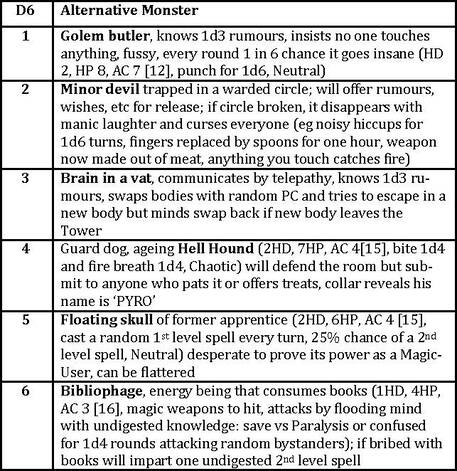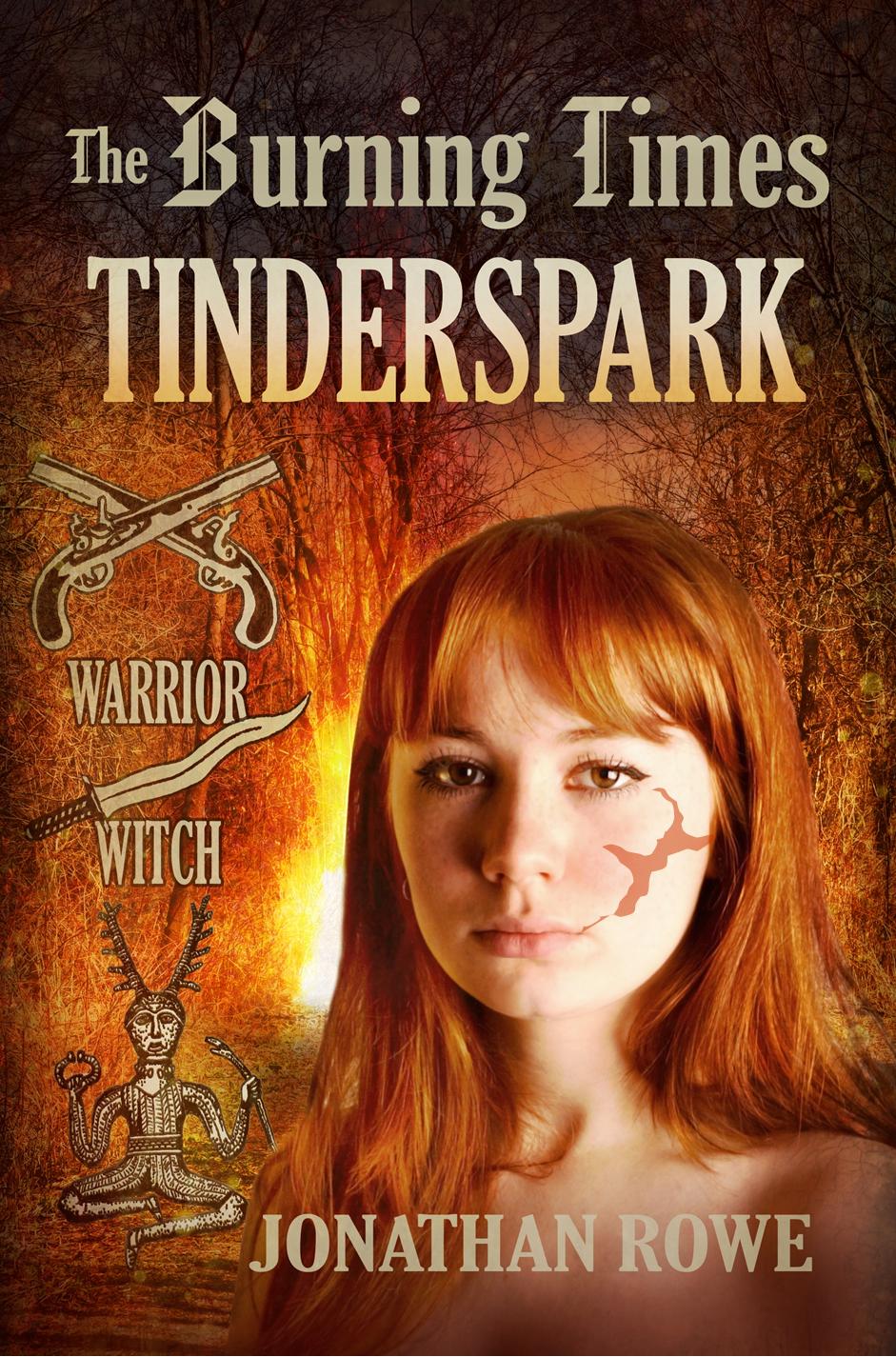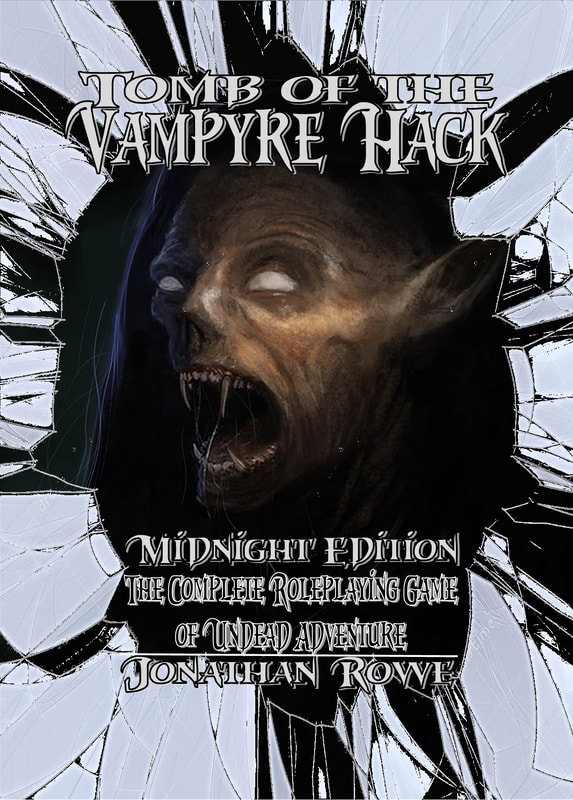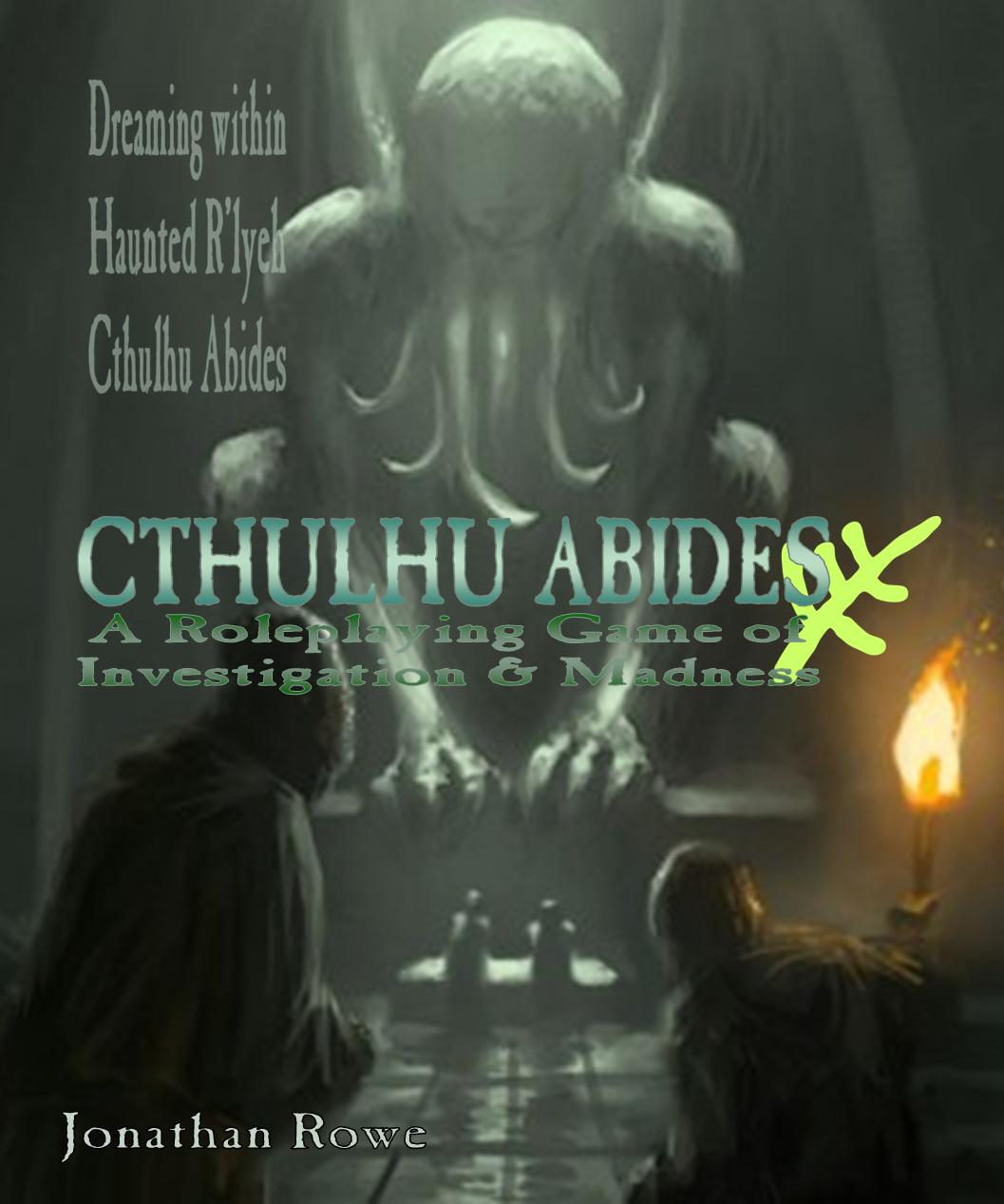|
The Hidden Hand Of The Horla is a scenario by Ryan J. Thompson that’s currently on offer over at drivethrurpg for five dollars, which is fine value for a 22-page module. Ryan does a lot to support OSR RPGs through zines and scenarios and the Gamers & Grognards blog. I picked up Horla because (1) I see Ryan is offering a discount on it and (2) I need a good old-school dungeon for my adventures into online RPGing these days and (3) the literary reference intrigues me. The module is designed for use with Gateway to Adventure, a Fantasy RPG still in development, but in truth it works frictionlessly with any early iteration of D&D or its charming retro-clones. There's a OSE version in the pipe, apparently. I prepped it for play using White Box RPG. Literature out of the way first: the Horla is a monster from Guy de Maupassant’s 1887 gothic fable of the same name. Maupassant’s Horla is a spectral parasite that attaches itself to the hapless narrator and drives him mad, despite (quite possibly) not even existing at all. H P Lovecraft cites it as in influence for The Call of Cthulhu (1928), since it's a mind-controlling, madness-inducing alien from the Southern Pacific bent on taking over the world. Ryan’s scenario eschews Gothic creepiness in favour of flat-out inter-dimensional weirdness. A wizard’s tower appears out of nowhere, after disappearing so long ago that it is legendary even for elves. The Tower looks like a massive hand. There are corridors and rooms in the fingers. You’re itching to go in and look about. Finding treasure and magical gewgaws is almost an added bonus. Legends tell of the Hand Mage's Tower that once stood at the edge of the realm. Within the Hand Mage experimented and hoarded his magical treasures. The tower stood for many years until one day it mysteriously vanished. Rumors spread that the mage had offended the gods and had been eradicated from existence, or else had made a pact with a demon prince and was now paying his due. Whatever the case, the tales became legend and all but the oldest elves were unsure if the tower had ever existed at all. Now the tower has reappeared where it once stood. Will you dare to enter the ancient tower in search of riches and magical secrets? This, in a nutshell, is it: you are creeping around a bizarre mansion of a long-gone plane-travelling wizard, figuring out his mystical tricks, traps and enchanted rooms, while encountering the nasty denizens who have crept in there too, either for a cosy place to lair, or to loot the place just like you. The single biggest strength of this dungeon has to be the architecture. The layout is imaginative, with multiple exists and entrances and diverging routes through the thumb and fingers of this peculiar structure. The floorplan is beautifully drawn but it will take a few passes for GMs to figure it out and how it relates to the text. One drawback is the linear flow of the adventure: PCs enter, move through the rooms, gather clues to access the wizard’s inner sanctum and, on doing so, confront the Horla, whereupon high-jinks ensue. Ryan takes a number of steps to break up this linear pattern. For one thing, there’s the option of accessing the dungeon through different entrances. For another, there’s a band of humanoid monsters loose on the site and a neat little table reveals their doings, as they ransack different rooms ahead of you. There’s also a Rumour Table that might tip players off to explore certain areas. These variables give what would otherwise be a narrow predicament plenty of variability and replayability. There's this gung-ho aesthetic at work, offering a backdrop of multi-dimensional vistas, insane high level wizards and mystical talking furniture. Ryan takes clear aim at the old Judges Guild adventures of the ‘70s and especially Wee Warriors' Palace of the Vampire Queen (1976). These sort of scenarios expected GMs to improvise and invent rather than offering text boxes to read aloud and a plot to follow slavishly. To this end, Ryan's background introduces the Hand Wizards and their dimension-hopping technology and the appendices provide “hand” themed spells for PC Magic Users to make use of - but it's up to the DM to decide how much of this should feature in the actual adventure. Having said that, some aspects are underdeveloped. The dungeon occupants are mostly unintelligent critters – oversized bugs and bats and serpents and stuff. All well and good, but there’s not much drama in confronting these. One would hope for more startling opponents in such a weird place: I dunno, golems, captive aliens, robot butlers, brains in vats, stuff that will make the players’ eyes pop. Giant centipedes just don’t cut it. Like this? Similarly, the Wandering Monster table just throws more of these pestiferous vermin at you. I feel there ought to be EVENTS going on in this place: rooms activating or deactivating, magical atmospherics, dimensional vortices, wrinkles in time, the whole tower warping out to cosmic destinations. Maybe like this? In a similar way, the climax, though unexpected, is a bit undercooked. For one thing, the players will discover references to the ‘Rod of Na'ir’ that can be used in ‘the Helm’ to launch the Tower across the dimensions – but there’s no reference in the text to where the artifact is or how it can be used. I suppose this is a conflict of philosophies. Ryan wants the scenario to be a barebones affair that different GMs and players can take in different directions: his commitment to the DIY ethos of primitive roleplaying really goes that deep. I feel that a premise as interesting as this is begging to be developed a bit further by its designer. I want the dungeon raiders to be agents of a rival Hand Wizard or alien force, not just accidental trespassers. I want the Rod of Na'ir to turn up so the players can steer the Tower off to Oz or R’lyeh or the Hollow Earth or Barsoom or Gamma World. And Ryan would doubtless say, “Then do so: it’s your game!” He’s right of course, but I feel he’s missed a trick by not offering these pointers himself, because he’s so steeped in this stuff his ideas would surely be awesome. Similarly, the Horla is an intriguing monster and Ryan provides elegant rules for different types of possession – but what exactly will the Horla do? what’s its plan? Presumably it will steal control of the Tower and jaunt off across the multiverse, dragging the PCs with it in a journey into madness. Or at least, that’s what I imagine. Maybe it just attacks the party, forcing players to kill their friends. That’s less interesting. Or is Horla-possession meant to be the cue for a future scenario, or a whole campaign? It would be nice if Ryan offered a range of options for where to go with the Horla, but instead the adventure abruptly ends at this point. I mentioned earlier that the creature derives from Gothic horror, but the scenario itself is the highest of high fantasy romance. The Horla seems out of place here, as if it belongs in a slightly different scenario, perhaps one where there’s a cast of NPCs occupying the Tower and the challenge is to figure out which one the Horla is possessing before it does something gruesome. The Horla is such an intriguing proposition it’s almost wasted as the ‘boss monster’ at the end of magical scavenger hunt. Did Ryan have two different scenarios in mind, one the exploration of a bizarre magical tower, the other a sinister tale of a wizard possessed by an otherworldly entity, so he blended them together? It almost works, but neither of the constituent stories quite gets the treatment it deserves. In conclusion, Hidden Hand of the Horla succeeds on the terms Ryan sets for it: it honours and emulates the classic indie RPG publications of the '70s that were so rich with ideas and giddy with excitement for this new hobby that they cast inspiration away left, right and centre, barely stopping to develop anything because, oh look! a new idea has just popped up even better than the last one. There's a sense in which Hidden Hand Of The Horla isn't really a commercial project at all, so much as an artistic or even autobiographical one. This intriguing structure that returns to our world after a mysterious absence, re-connecting us to plane-traveling and gee-willikers wizardry: isn't that a bit like a metaphor for OSR roleplaying, bringing back the romance and excitement of early D&D? And the Horla, at the end, bestowing brooding obsession on the person who discovers it: that's the hobby itself, the addictive kick of your first game of D&D, that turns the rest of your adolescence, perhaps the rest of your life, over to fantasy, spells, gods and demons, campaign maps, dungeons... Oh! If I could only leave it, if I could only go away and flee, and never return, I should be saved; but I cannot. - The Horla, Guy De Maupassant I don't know Ryan personally, but I know I've felt like that about my hobby, at times: times when I really needed to be revising for exams or preparing for work, not mapping out a ruined castle or composing a timeline for an Elven dynasty.
On this view, Hidden Hand of the Horla is less like a scenario and more like a poem, a sort of love-letter to a formative experience of D&D, but also a coded warning, with it's closing reflection on the game's obsessive influence for any youngster coming into contact with it. Br-rr. All of a sudden, is it chilly in here?
0 Comments
Leave a Reply. |
30 Minute Dungeons
Essays on Forge
FORGE Reviews
OSR REVIEWS
White Box
THROUGH THE Hedgerow
Fen Orc
I'm a teacher and a writer and I love board games and RPGs. I got into D&D back in the '70s with Eric Holmes' 'Blue Book' set and I've started writing my own OSR-inspired games - as well as fantasy and supernatural fiction.. Archives
April 2024
Categories
All
|







 RSS Feed
RSS Feed




























